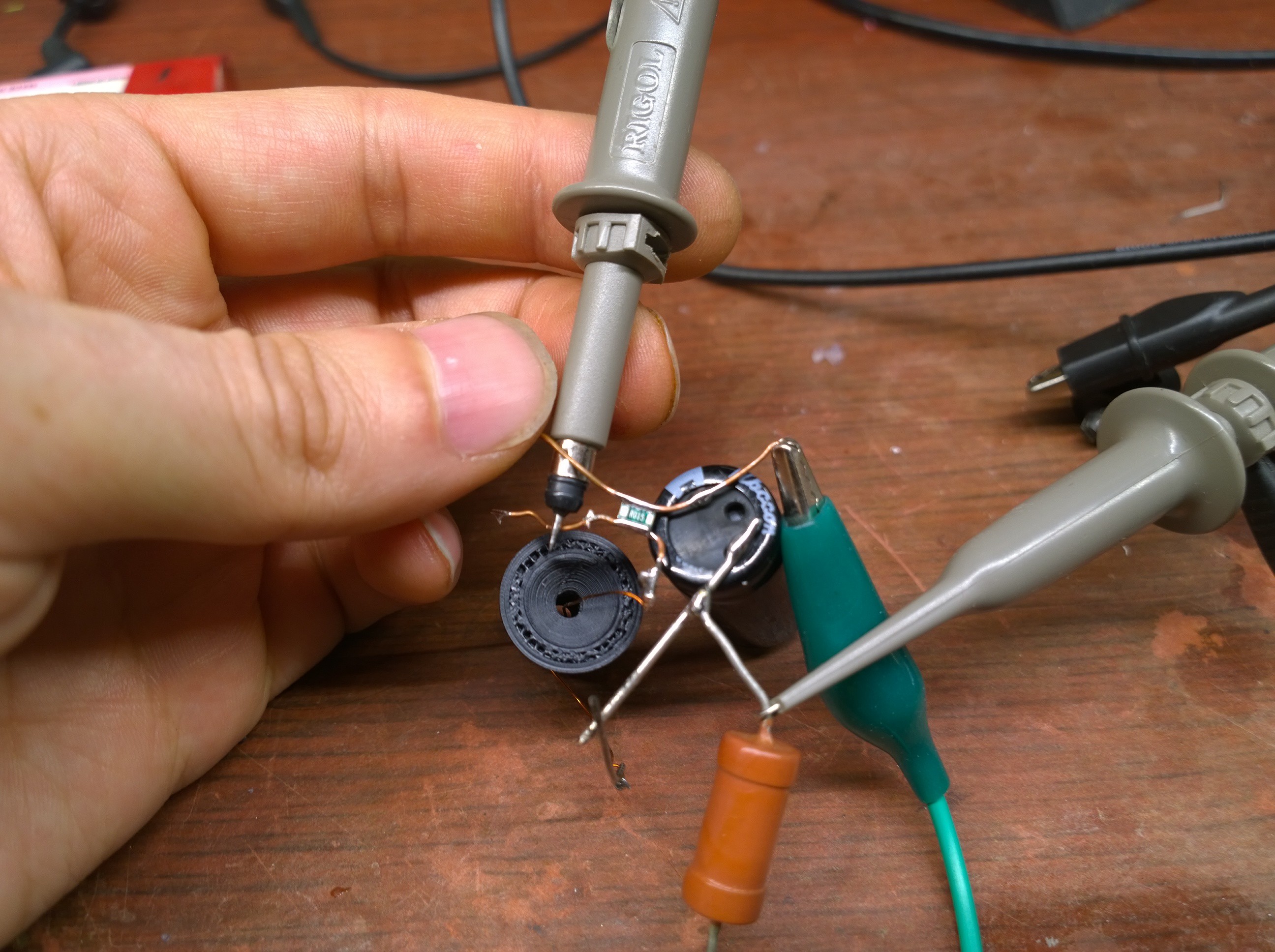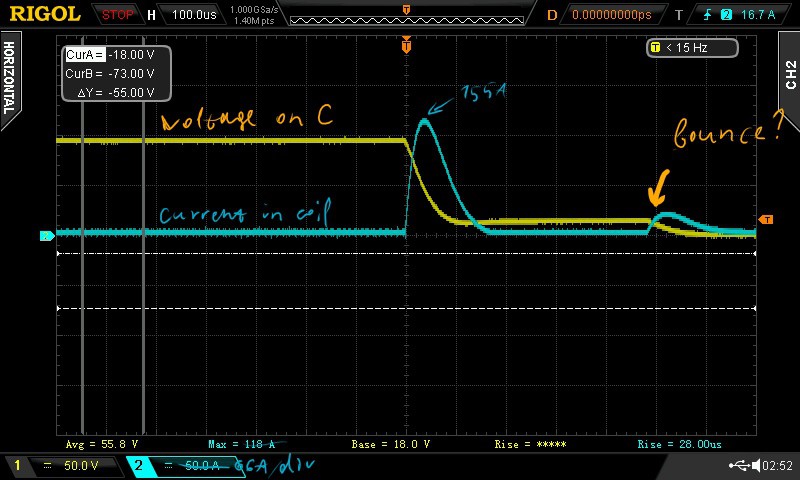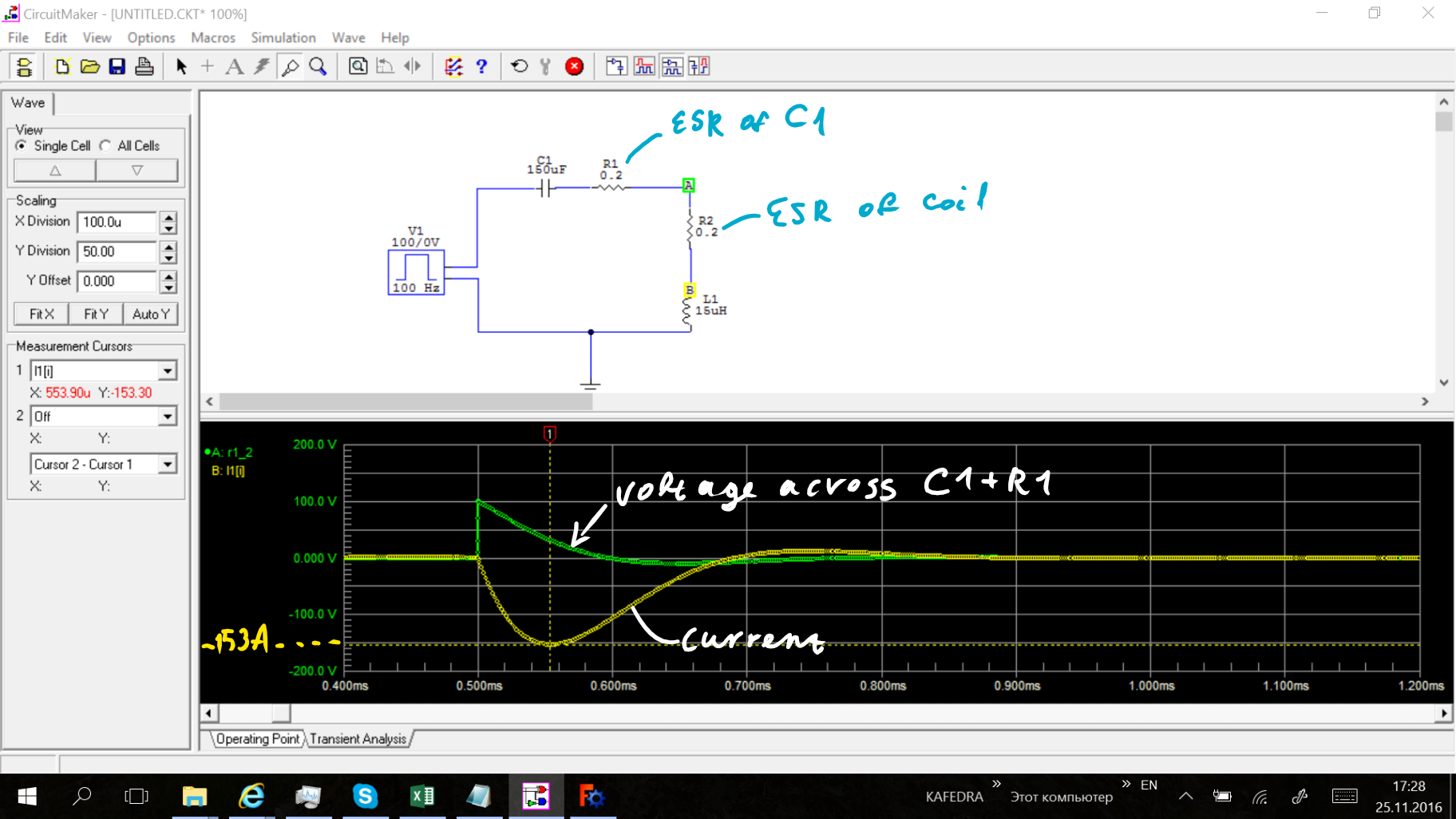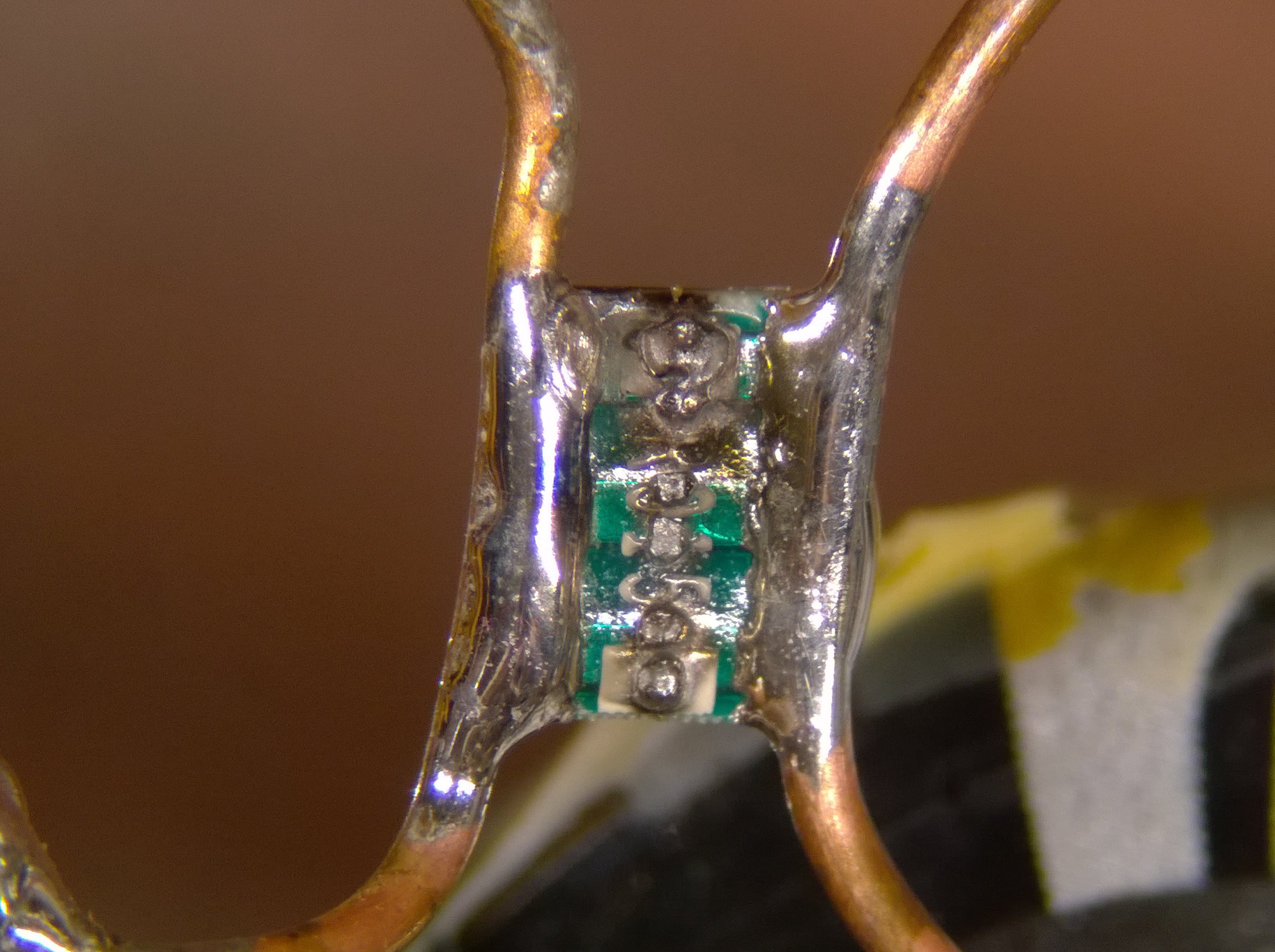As I wrote in previous log, the current in the first attempt was way lower than I expected. I want to investigate, what actually happens, so that I can predict the outcome next time.
I've added a current shunt resistor (0.015 ohm, should not affect the circuit). And captured both current and voltage traces of the pulse.


Turns out my quick estimate of 80 A was way off. The actual peak current was 150 A, which is only two times lower than 300 A I wanted.
That is of course assuming the shunt resistor is accurate at currents this high. Which I'm not really sure about, but I hope that's the best resistor for the purpose, on account of being small, and its resistive layer being very very thin.
Is this waveform as one would expect? Not sure yet, maybe it's time to add some SPICE to the meal =)
UPDATE:
 Wow, that is almost spot on!
Wow, that is almost spot on!
I didn't know the ESR of capacitor, so I just gave it a guess to be 0.2 ohms. The simulation waveforms are very similar to the ones I measured.
So, THERE'S NOTHING WRONG WITH OHM'S LAW. "The problem was between driver seat and steering wheel".
UPDATE2:
I tried to acquire the pulse with larger capacitor, but current sense resistor exploded. Oops.

Does it still obey Ohm's law? =)
 DeepSOIC
DeepSOIC
Discussions
Become a Hackaday.io Member
Create an account to leave a comment. Already have an account? Log In.
You've got a poorly tuned resonant LC tank :P
I'd expect a little bit of bounce, and non-linear discharge curves like that.
Are you sure? yes | no
Yep, it's an LC tank, apparently close to being critically damped, which is actually great!
Are you sure? yes | no